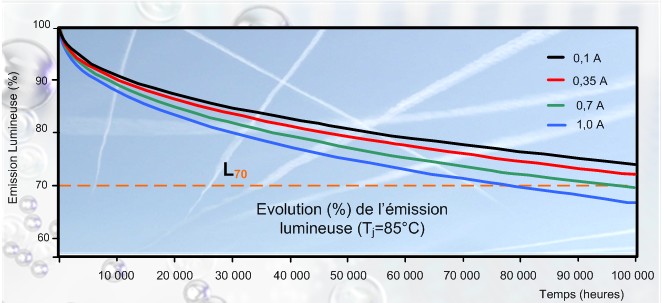Lifetime: a simple question of know-how
Most lighting manufacturers currently suggest a lifetime of 50,000 to 60,000 hours for their LED lighting. This lifetime corresponds to the L70 (The period at the end of which a reduction to 70% of the initial luminous flow can be observed), defining the moment when the drop in luminous flow can be detected by the human eye.
However, LUCISBIO with selection of high quality LED and with a specific design, even with a cautious approach, suggests that, as a minimum, 100.000 hours should be relied upon for all of our products. Even so, with a use of 12 hours per day, 365 days per year this minimum lifetime level would provide for at least 22 years of usage, which is far superior to existing systems.
Some important prerequisites must be observed in order to use LED and maintain them in good condition without which these components would be prone to damage.
Thermal dissipation
The LED functioning temperature must be as stable as possible which is accomplished by a finalized, robust and qualified installation design. Use of a SMI board specific to the installed model of LED and the designed dimensions of the dissipation substrate are therefore fundamental.
Power conversion quality
The major challenge in the lighting system’s design is associated with regulation of its power supply. Stability of the power must be perfect to prevent any damage to the LED.
In consequence, LED lighting systems must be powered through a regulated and rectified current.
Power regulation units must, therefore, absorb the frequent electrical disturbances in the mains power supply. If components are subjected to harmonics or power imperfections, their lifetime can be greatly reduced. LUCISBIO® study its own power supply units in order to manage perfectly the required power conversion. This type of powering module will absorb any electric perturbation from the mains or from the LED, in both directions.


